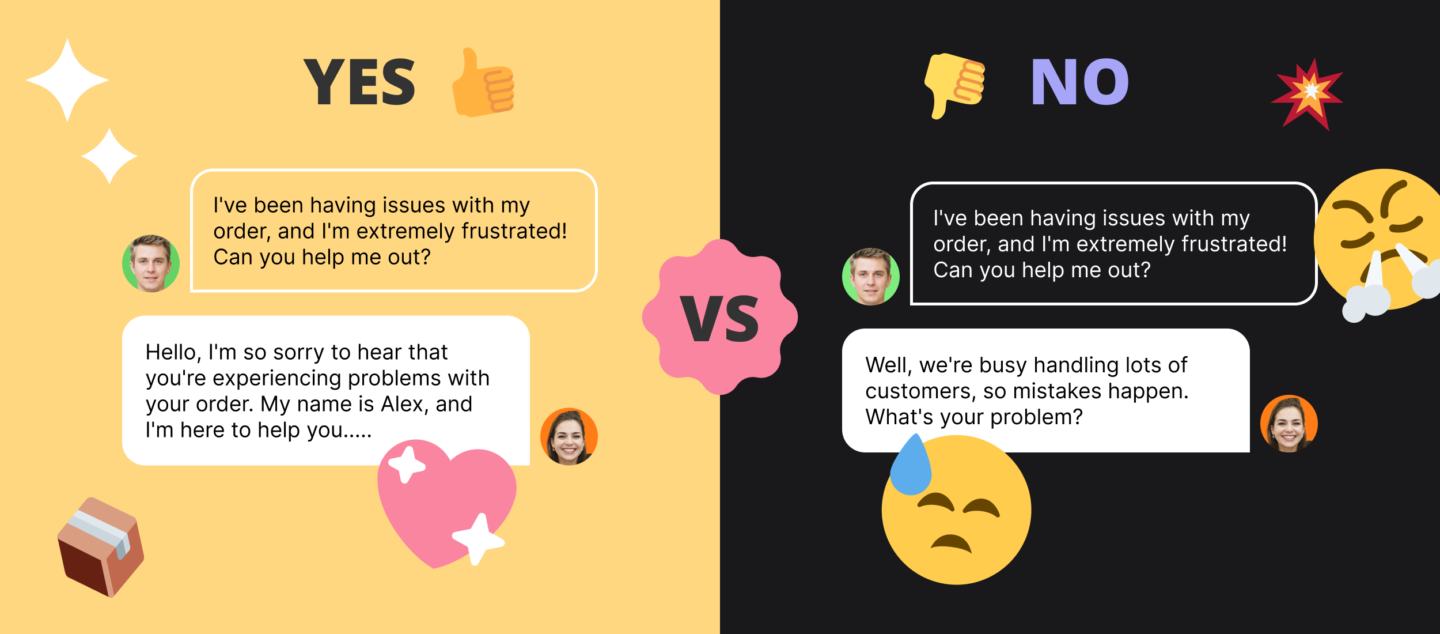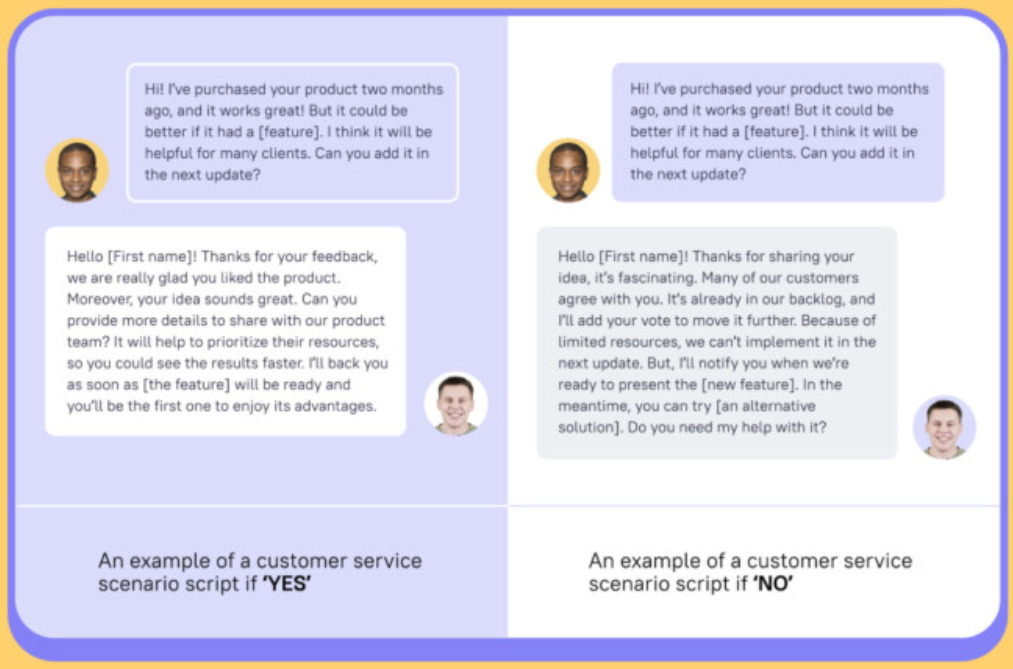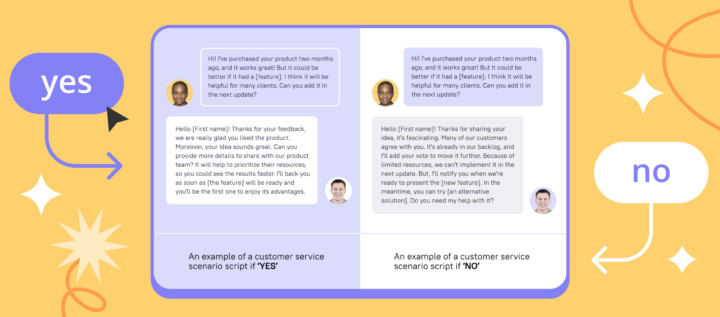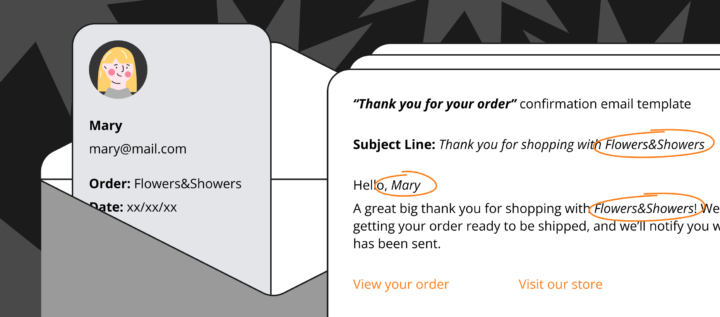Best script template on how to deal with unhappy customer

Imagine a customer service representative named Steve, who starts the conversation by completely ignoring the customer’s initial request or concern. Instead, Steve launches into a lengthy sales pitch about the latest features of their product or service, disregarding the customer’s needs or preferences.
By not addressing the customer’s issue from the outset and focusing on upselling, he leaves the customer feeling unheard and frustrated, thereby decreasing their satisfaction and loyalty to the company.
It is crucial for organizations to avoid such approach. Good to know, in this article, you’ll find out list of best practices and example of the script on how to deal with unhappy customer.
Read also: 17 Zendesk alternative services and 13 live chat alternatives to try this year
Why you can’t just ignore unhappy customers
Working with unhappy clients is a crucial aspect of customer service and business success. Addressing and resolving their concerns can yield several significant benefits, including:
- By working with unhappy clients to resolve their issues, you demonstrate your commitment to their satisfaction, increasing the likelihood of retaining them as customers and fostering long-term loyalty.
- Unhappy clients often provide insights into areas where your products, services, or processes can be improved. By listening to their feedback, you can identify and address issues to enhance overall customer experience and satisfaction.
- When you successfully address an unhappy client’s concerns, they may share their positive experience with others, generating positive word-of-mouth and enhancing your company’s reputation.
- By working proactively with unhappy clients, you set your business apart from competitors that may not prioritize customer satisfaction, giving you a competitive edge in the marketplace.
- When you invest time and effort in addressing unhappy clients’ issues, you increase the likelihood of turning them into repeat customers, leading to higher customer lifetime value and long-term revenue for your business.
- Working with unhappy clients can offer valuable learning experiences for your customer service team, helping them develop problem-solving and communication skills that will benefit your organization in the long run.
- When you demonstrate your willingness to address unhappy clients’ concerns, you build trust and credibility with your customer base, which can lead to increased customer loyalty and referrals.
- Addressing unhappy clients’ concerns allows you to resolve conflicts and minimize potential damage to your business reputation, including negative online reviews or social media complaints.
By recognizing the importance of working with unhappy clients and proactively addressing their concerns, businesses can enjoy numerous benefits, including improved customer satisfaction, loyalty, and overall business success.
How would you respond to this message?
Customer: I’ve been having issues with my order, and I’m extremely frustrated! Can you help me out?
Bad response example to unhappy customer request
CSR: Well, we’re busy handling lots of customers, so mistakes happen. What’s your problem?
Customer: My package was supposed to be delivered last week, but I still haven’t received it, and I can’t track it online. Your customer support hasn’t been helpful so far.
CSR: Maybe you entered the wrong shipping address or made a mistake with the order number. Did you double-check everything before placing the order?
Customer: I’ve checked everything, and my information is correct. Can you please look into it and tell me what’s going on?
CSR: I’m not sure what you want me to do. Packages get delayed all the time. Just wait a bit longer, and it will probably show up eventually.
This is a bad example of handling an unhappy customer request for several reasons:
- The manager does not acknowledge the customer’s frustration or apologize for the inconvenience they’ve experienced.
- Instead of taking responsibility for the issue and looking into it, the CSR immediately suggests that the customer might have made a mistake, placing the blame on them.
- The response is dismissive and unhelpful, providing no real solutions or support for the customer’s issue.
- The CSR does not offer to investigate the problem or provide any assistance to the customer.
By responding in this manner, the customer service representative is likely to exacerbate the customer’s dissatisfaction, potentially leading to negative reviews, loss of business, and damage to the company’s reputation.
Read also:
15 best lead generation services to grow your base in 2023
The 36 statistics on how chatbot for businesses grow your revenue in 2023
The secret weapon of your competitors or Why you should focus on customer service first
Good response example to unhappy customer request
CSR: Hello, I’m so sorry to hear that you’re experiencing problems with your order. My name is Alex, and I’m here to help you. Can you please provide me with your name, email address, and order number so I can look into the issue for you?
Customer: My name is Jane Doe, my email is janedoe@example.com, and my order number is 12345. The package was supposed to be delivered last week, but I still haven’t received it, and I can’t track it online. Plus, your customer support hasn’t been helpful so far.
CSR: Thank you for providing the information, Jane. I apologize for the inconvenience you’ve experienced, and I understand how frustrating this situation must be. Please allow me a moment to look into your order and see what might be causing the delay.
Customer: I really hope you can resolve this. I’ve been waiting far too long for my package, and if it doesn’t arrive soon, I will have to consider a refund.
CSR: I completely understand your concern, Jane. I’ve checked your order details and found that there was an issue with the shipping carrier, causing a delay in delivery. I’ve contacted the carrier to prioritize your package and provide an updated delivery date. I’ll also email you the updated tracking information.
I apologize for any inconvenience this has caused you and want to assure you that we are committed to resolving this issue as quickly as possible. If the package doesn’t arrive within the updated delivery time frame, please let us know, and we’ll be more than happy to process a refund for you.
Customer: Thank you, Alex. I appreciate your assistance in resolving this issue. I’ll be waiting for the updated tracking information and the delivery.
Here is why it is a good example of handling an unhappy customer request:
- The manager acknowledges the customer’s frustration and apologizes for the inconvenience.
- The CSR promptly asks for relevant information to look into the issue, demonstrating their willingness to help and resolve the problem.
- The customer is informed about the issue because manager explained the cause of the delay and outlined the steps they are taking to address it.
- The CSR provides a solution by contacting the shipping carrier, updating the delivery date, and sending the customer updated tracking information.
- Customer knows that if the package doesn’t arrive within the updated time frame, they will process a refund.
By responding in this manner, the customer service representative effectively addresses the customer’s concerns, alleviates their frustration, and fosters a positive experience that can lead to improved customer satisfaction and loyalty.
Read also:
10 conversion rate optimization tools to enhance your funnel and boost revenue
Customer engagement strategy template to create omnichannel campaigns
Best practices of dealing with unhappy clients
When dealing with unhappy clients, it’s crucial to maintain professionalism and empathy while striving to resolve their issues effectively. Here are detailed tips to help you navigate these challenging situations:
- Allow the customer to express their concerns without interrupting them. Pay attention to their words and tone, and refrain from making assumptions. Use phrases like:
- “I understand how you feel.”
- “Please tell me more about the issue you’re experiencing.”
- “It sounds like you’re really frustrated because…”
- Acknowledge the customer’s feelings and express understanding of their frustration. Validate their emotions and demonstrate that you care about their concerns. Use phrases like:
- “I can see why you’re upset.”
- “I apologize for any inconvenience this has caused.”
- “Thank you for bringing this to our attention.”
- Own up to any mistakes or shortcomings on your company’s part and offer a genuine apology. This helps build trust and shows the customer that you’re committed to making things right. Use phrases like:
- “I’m sorry that you’ve had this experience.”
- “We take full responsibility for this issue.”
- “We understand that we’ve let you down, and we want to make it right.”
- After understanding the issue, provide a solution that addresses the customer’s concerns. If you’re unable to resolve the issue immediately, offer alternatives or explain the steps you’ll take to find a solution. Use phrases like:
- “Here’s what we can do to resolve this issue for you…”
- “I’ll investigate this further and get back to you with more information.”
- “We’re unable to do X, but we can offer Y as an alternative solution.”
- Update the customer on any progress or developments regarding their issue. This demonstrates that you’re actively working to resolve their concerns and helps build trust. Use phrases like:
- “I wanted to update you on the status of your issue…”
- “I’ve contacted the relevant department, and they’re working on a solution.”
- “We expect to have this resolved by [specific time frame].”
- Even if the customer is upset or aggressive, remain calm, composed, and respectful throughout the conversation. This can help diffuse tension and prevent the situation from escalating. Use phrases like:
- “I understand your frustration, and I’m here to help.”
- “We appreciate your patience while we work to resolve this issue.”
- “Thank you for giving us the opportunity to address your concerns.”
- Once the issue has been resolved, follow up with the customer to ensure they’re satisfied with the outcome. This reinforces your commitment to their satisfaction and helps build a positive relationship. Use phrases like:
- “I wanted to check in and make sure everything was resolved to your satisfaction.”
- “Please don’t hesitate to reach out if you have any further concerns.”
- “We appreciate your business and hope to continue serving you in the future.”
By employing these tips and maintaining a focus on empathy, problem-solving, and clear communication, you can effectively handle unhappy clients and create a more positive customer experience.
Deal with complicated customer queries like a pro with our playbook of 15 tricky customer service scenarios and ready-made answers 👇
Thanks! Now check your inbox

Read also:
👉 Live Chat Best Practices: 20 Hacks to Make Customer Service Better
👉7 Best Live Chat for eCommerce: Boost Conversion on your Website
👉 Top 5 live chat mobile app: find the best fit for your business
👉 Live Chat: How Online Chat Tool Can Help Your Business
👉 20 Best Live Chat Software for your website chat service




